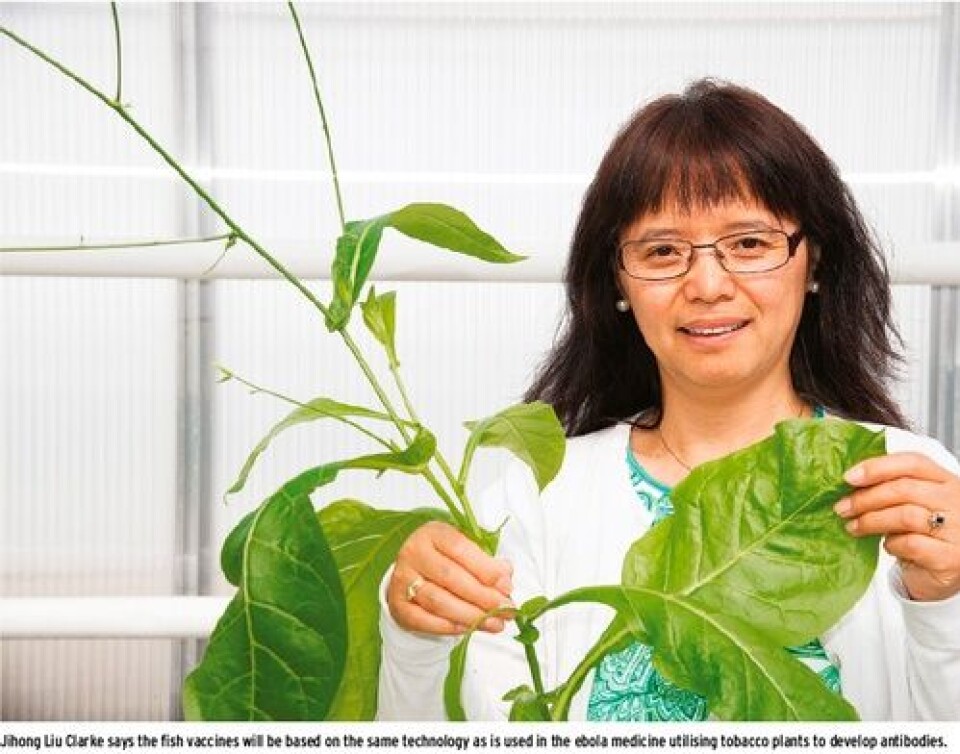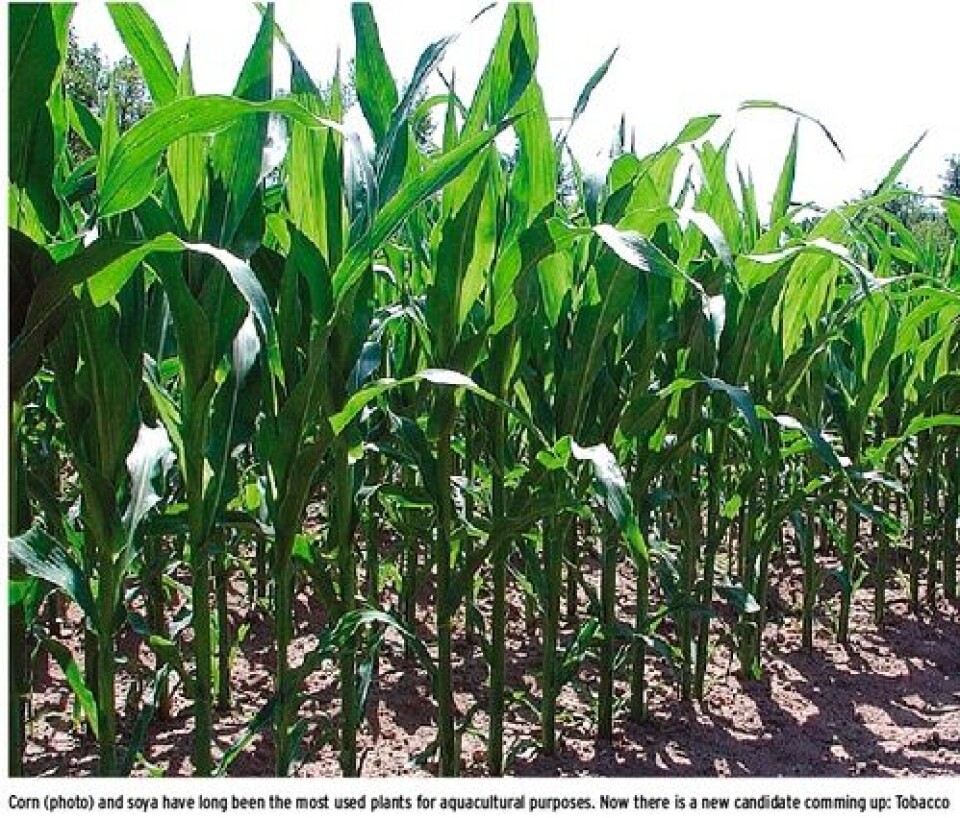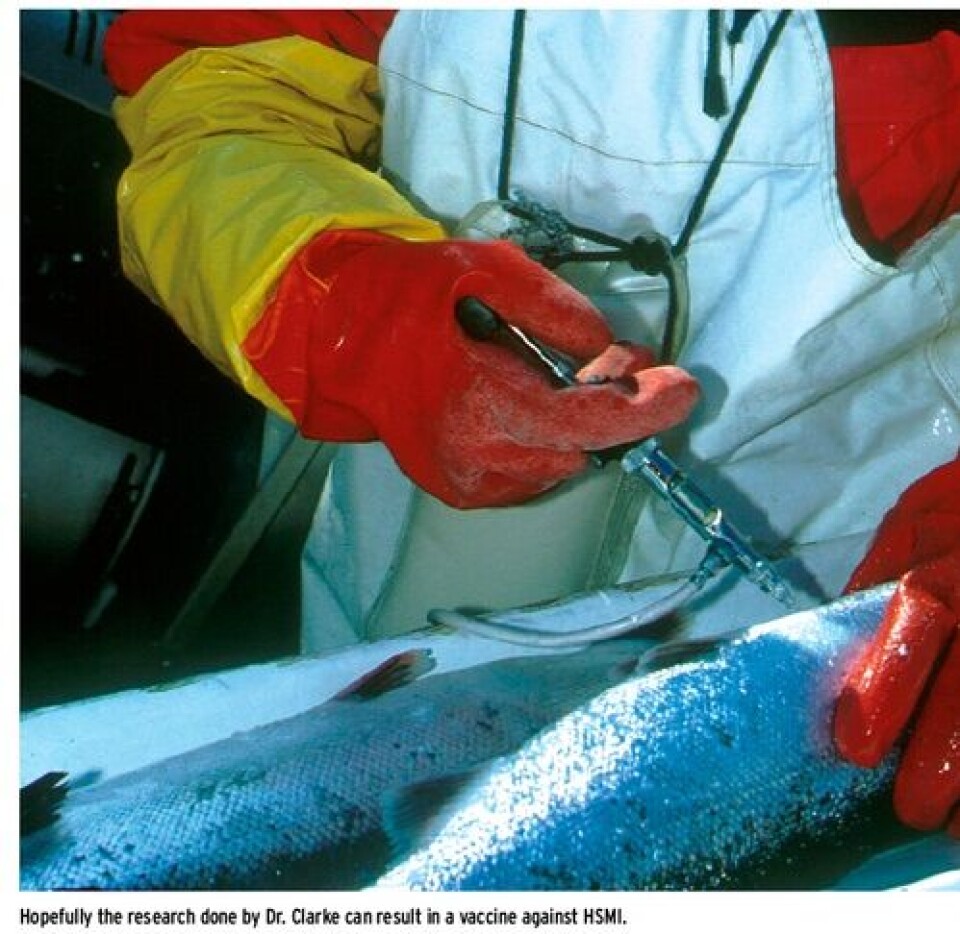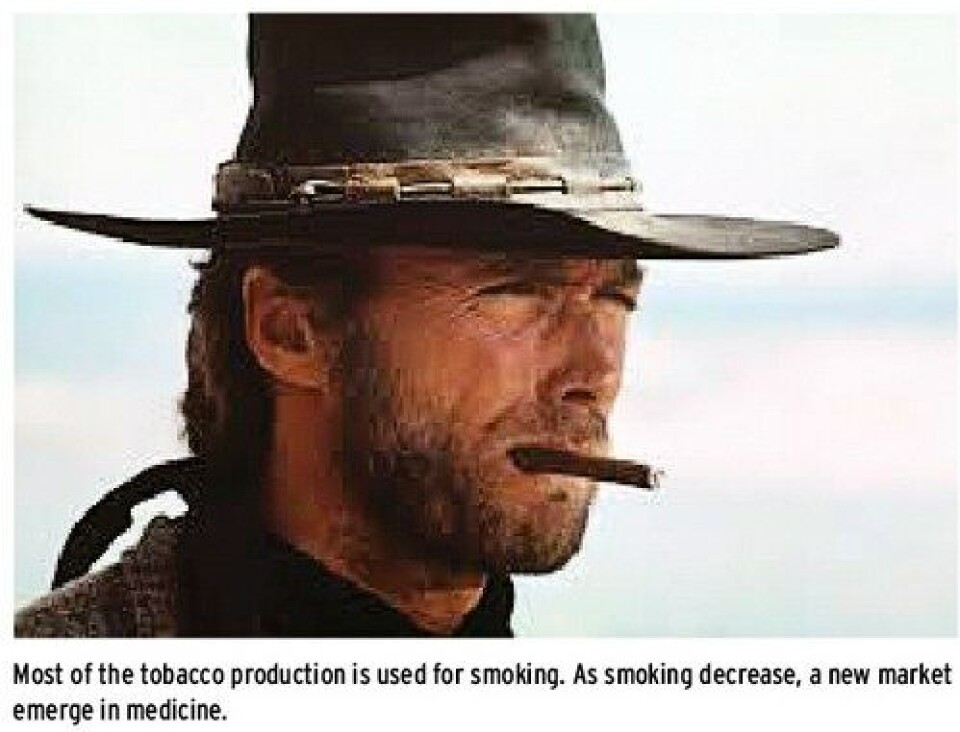Making vaccines against salmon viruses from genetically modified tobacco plants
Siri Elise Dybdal

Infectious diseases pose a significant threat to the profitability and sustainability of modern aquaculture. The future expansion of the industry depends on control of infectious diseases - particularly viral infections. It is estimated that the annual loss in the Norwegian aquaculture industry caused by viral diseases alone is around1.5 billion NOK. Approximately 15-20 per cent of the total number of fish transferred to sea, die during the sea-water stage. Control of viral diseases through vaccines is therefore essential. However, conventional approaches to vaccine production for both humans and animals are expensive, involving complex production and delivery methods. To date, there are no more than 30 commercial vaccines for the prevention of a wide range of fish diseases. Low cost is one of the most important issues in the future development of aquaculture vaccines. The demand for a new approach, with the potential for easy scale-up, has become increasingly important.

Using tobacco plants Four years ago at Bioforsk, the Norwegian Institute for Agricultural and Environmental Research, senior researcher Jihong Liu Clarke began working on producing a vaccine against Dengue fever. She was inspired by Charles Arntzen, the man behind the ebola medicine ZMapp, and his work with edible vaccines and tobacco plants for developing antibodies. Clarke has used a chloroplast genetic engineering method to express both monovalent and tetravalent antigens in tobacco plants and salad. Plant production offers several advantages including economic aspects as plants can be grown on a larger scale than other systems. The plant based systems also bypass the safety concerns inherent in live virus vaccines. As a result of this work, Clarke was recently awarded financing from the EEA financial mechanism and RCN (Nanotek 2021 program) for two spin-off projects. One of these projects involves developing vaccines for three fish diseases- the salmonoid viruses Piscine Reovirus (PRV) and Salmonid alphavirus (SAV), as well as the Noda virus (Viral Nervous Necrosis - VNN) which attacks whitefish. To date, no plant-produced fish vaccine has been commercially released and there is a need to advance the research field which has bioecomic significance. “Bioforsk have got funding for three fish vaccines. These are diseases that are a problem to the aquaculture industry both in Norway and abroad and cause great economic losses,” says Jihong Liu Clarke. The project is a collaboration with partners from the Norwegian University of Life Sciences (NMBU, the project manager and owner) as well as consortium partners nationally and internationally. The fish vaccines will be based on the same technology as is used in the ebola medicine utilising tobacco plants to develop antibodies. The possibility of controlled release of antigen will be a particularly attractive approach. Through this method, ultrasound will be employed for induced release at given time points after the first vaccination. This gives an option to boost the vaccination, which is currently not possible in salmon aquaculture.
PRV spreading One of the vaccines being developed is against PRV. In the last two decades, the Norwegian salmon farming industry have experienced a growing number of outbreaks from heart- and skeletal muscle inflammation (HSMI). The virus is linked to PRV and is widespread in farmed salmon in the sea. The disease was first registered in 1999 in Norway. In 2002, HSMI was diagnosed in 41 farms and since then prevalence has increased peaking with 162 cases in 2011 and 134 cases in 2013. According to the Norwegian National Veterinary Institute fish health report 2013, the viral disease was the most frequently detected disease annually in sites with Atlantic salmon from 2011 to today in Norway. “It is currently one of the salmon industry’s biggest challenges. In recent years it has also been detected in freshwater sites and in wild fish,” says Clarke and adds that it has now been found in most other countries that have salmon production on a larger scale including Chile, Canada, Scotland and Ireland. HSMI is not seen without PRV being found in internal organ, but non-symptomatic infections do occur. Affected fish typically show signs of circulatory disturbance; pale heart, ascites, yellow liver, swollen spleen and petechiae in perivascular fat. Clinical signs include reduced apatite and aberrant swimming behaviour. Most outbreaks are reported 5-9 months after transfer to sea water. The mortality rate varies, but losses up to 25 per cent are reported. The morbidity is generally high. There are indications which imply that a complex interplay between the virus infection and other factors cause disease outbreaks.

Little knowledge “It is very important to create a vaccine against PRV. It has flared up in recent time, but there is still little knowledge about this disease. We do not have all the facts,” Clarke points out. This makes the work with the vaccine more challenging she admits: “There are some challenges in relation to PRV. It is a new virus and we don’t know all the antigens; we lack knowledge as to which proteins to use. The work we are carrying out will be based on theory. If it is not efficient we need to test new proteins,” Clarke explains. She says they still hope to complete the work within three years.
Stopping PD The second vaccine the scientists are developing is against Salmonid alphavirus (SAV). Pancreas disease (PD) caused by SAV has a significant impact on Norwegian salmon and rainbow trout production, as well as the aquaculture industry in other European countries e.g. the UK. PD can provide huge economic losses due to poor growth and reduced harvest quality. The disease has been one of the most damaging fish diseases in Norway in recent years. The first clinical signs of PD are often that the fish suddenly stops eating. Then within two to three weeks it begins to die. The percentage of fish that become chronically ill after an outbreak varies. The disease is contagious and spreads within a site, to other sites in the same fjord system and through transport of infected fish. Fish can be infected with the virus without an outbreak developing. However, stress can trigger or amplify an outbreak. The main reservoir of infection is currently infected fish in sea water. SAV is also occasionally detected in hatcheries. There are six variants of PD. Until 2011, the only one found in Norway was SAV 3. This type has the highest mortality. Towards the end of 2011 and in early 2012, several outbreaks caused by SAV 2 also occurred in Nordmøre and Sør-Trøndelag. So far, the mortality from SAV 2 is relatively low, but experience from Scotland indicates that this may increase if the disease gets a foothold in an increasingly larger area. Currenlty PD cannot be treated with drugs. There is an approved vaccine against the disease, but it seems to have limited effect compared to the protection obtained with vaccines against bacterial infections such as furunculosis and cold water vibriosis. However, it has some impact as the number of outbreaks is reduced, vaccinated fish may have lower mortality and a smaller share of fish is discarded at harvest. But the results vary somewhat between groups. The pancreas vaccine is very unstable. According to Clarke, the benefit with a new vaccine developed from plants is that it will be much more stable: “It will not only be cheaper to produce, but also more stable and efficient,” she claims.

NODA virus As for the Noda virus (Viral Nervous Necrosis - VNN) or Viral Encephalopathy and Retinopathy (VER) , this is a problem mainly in larvae and fry of marine species, including halibut, cod and sea bass. It has however also been described in larger fish. The disease affects nerve tissue and the most characteristic changes in diseased fish are uncoordinated swimming motion. VNN has been detected in more than 22 different fish species from around the world. In Norway, the virus has been detected in cod, halibut and turbot in farms and in cod caught in the wild. The Noda virus was first detected in Norway in 1995 in halibut larvae. Mortality in young fish can be as high as 100%. There is currently no effective treatment. Therefore, the disease must be controlled by preventive action. A vaccine would be groundbreaking.
Thinking outside the box “We are thinking outside the box. Plants can be used for more than food and feed. We are adding value and pushing the boundaries,” Clarke says She says tobacco plants were chosen intentionally, as it adds value on a different level: “What will these farmers do if they don’t grow tobacco plants? Tobacco growers and industry need to identify a novel application for tobacco plants. The climate where tobacco is cultivated might not be that great for growing other plants. Furthermore, they have often been doing it for generations and it is what they know. It is difficult to change habits over night.” Using tobacco plants for the production of vaccines and medicines is changing something which previously had a negative association to something positive. “And it does not need the same financial investment when compared with fermenter-based production systems. It is also a goal for us to add value within the green and blue industries. It is a good example of how research can contribute on different levels,” she emphasises. Clarke is keen to underline that biotechnology is not just GM food, which many are skeptical about: “This is just a small part, we can make so much more using biotechnology - such as life saving medicine, enzymes for degradation of forest-based biomass and food additives to mention a few.”























































